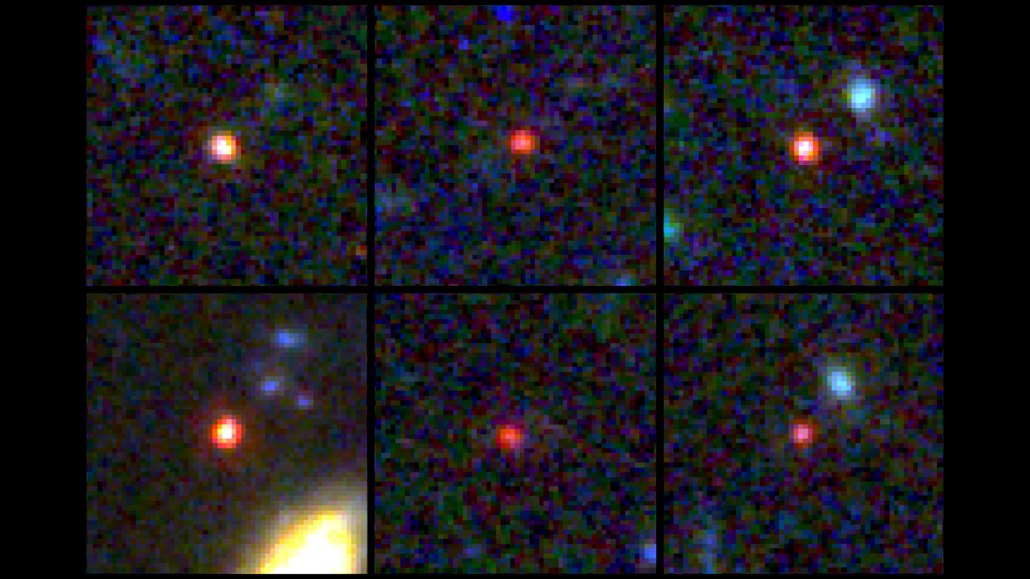The James Webb telescope found six galaxies that may be too hefty for their age
The masses of the galaxies raise questions about how they got so big so fast

These images from the James Webb Space Telescope zoom in on six bright, red, extremely distant galaxies that appear to be too massive to exist.
I. Labbé/Swinburne University of Technology, CSA, ESA, NASA. Image processing: G. Brammer/Niels Bohr Institute’s Cosmic Dawn Center/University of Copenhagen







